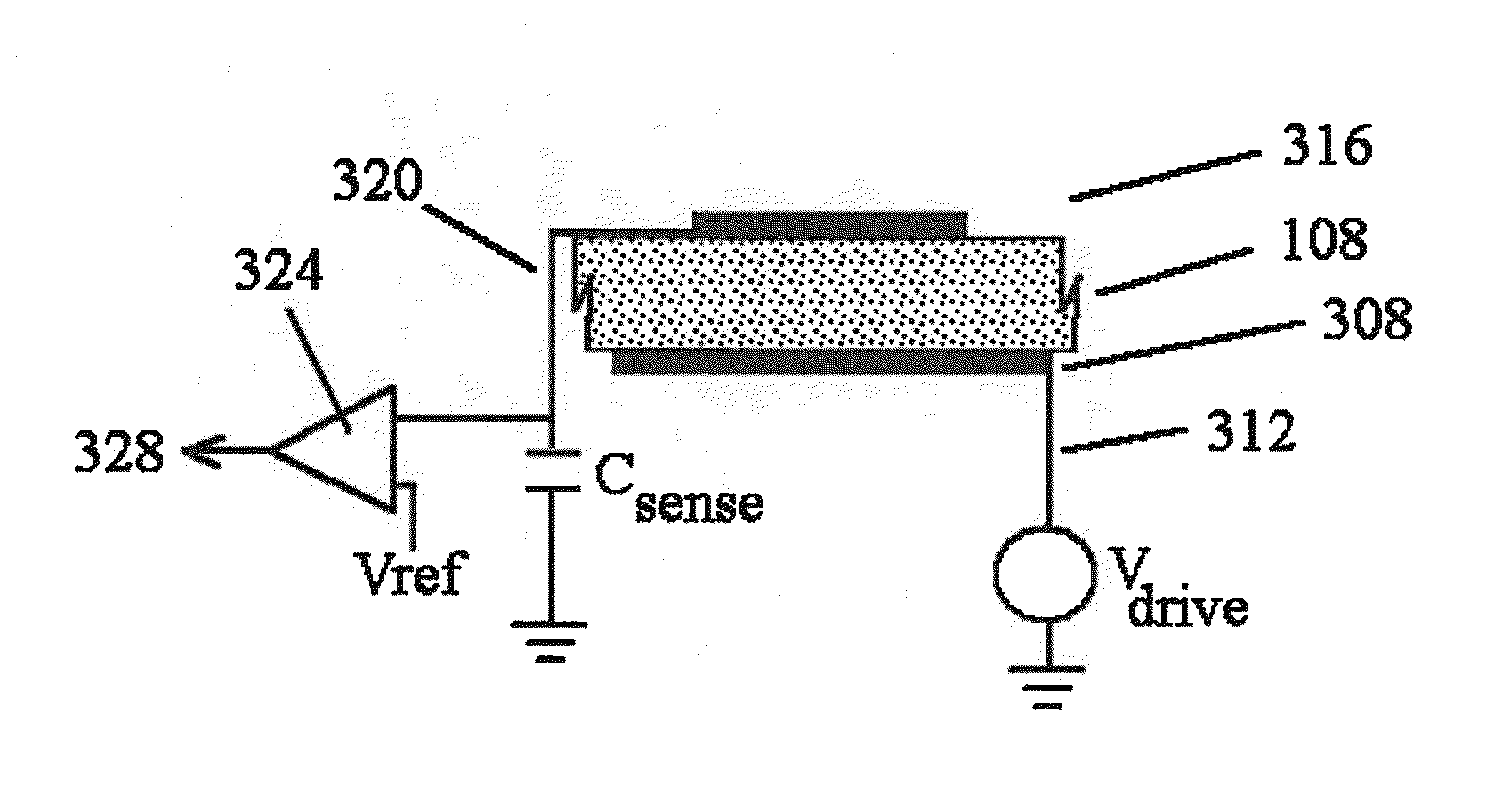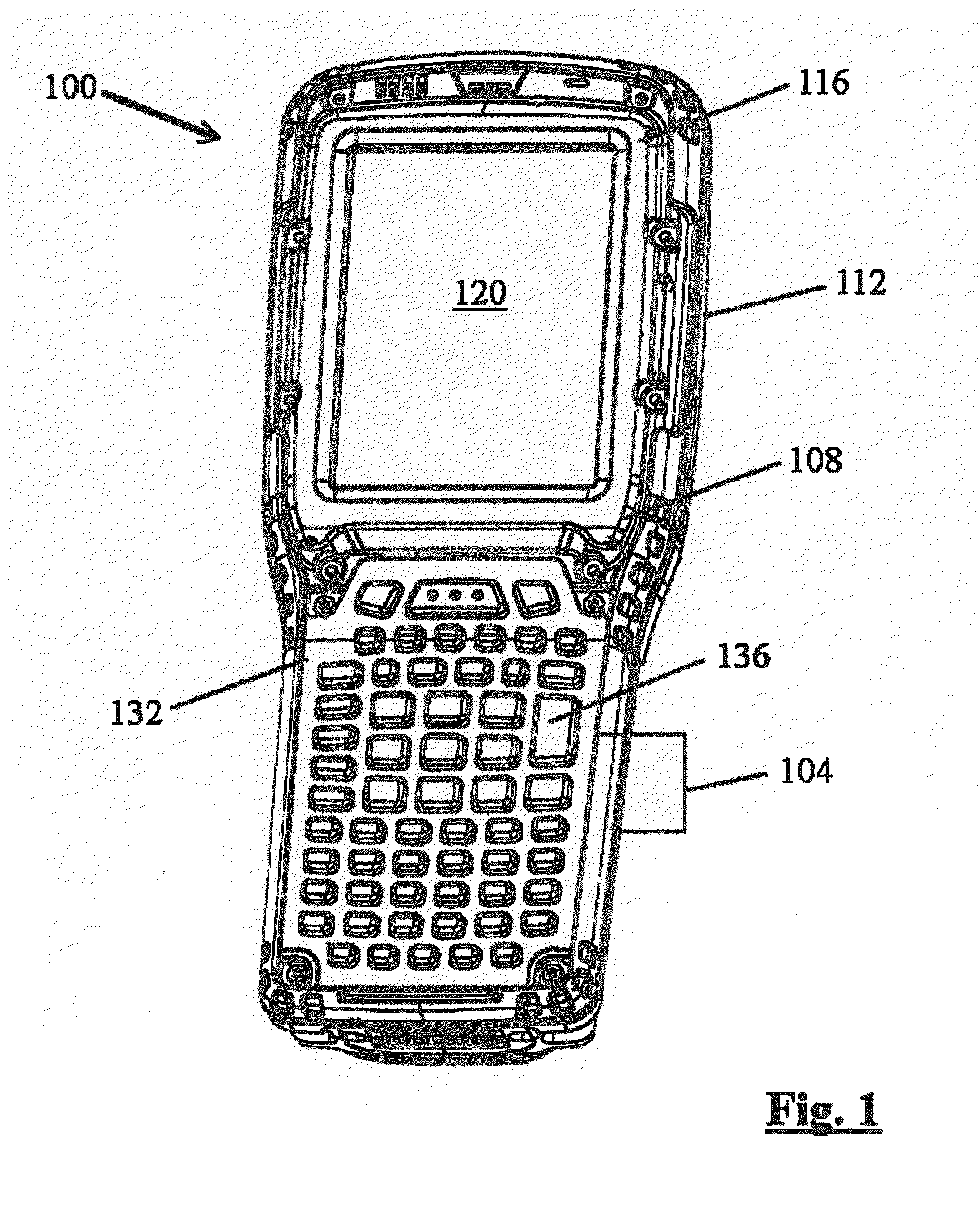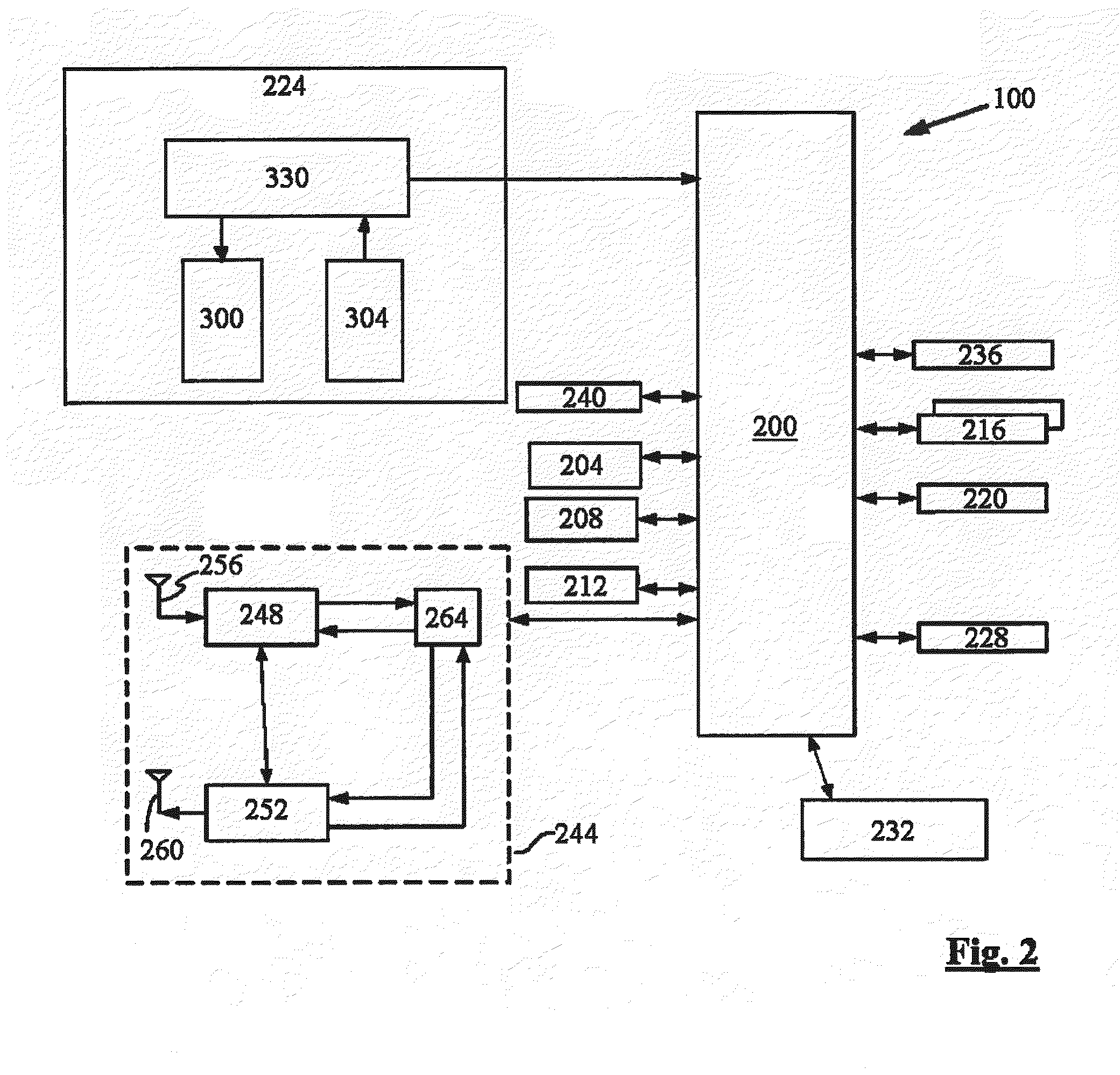Capacitive sensing keyboard
a capacitive sensing and keyboard technology, applied in the field of capacitive sensing keyboards, can solve the problems of less adaptability of the computing device than other than the one desired, the cost of changing the keyboard may be higher than is otherwise desired, and the keyboard tends to wear with use, so as to reduce the dielectric value of materials
- Summary
- Abstract
- Description
- Claims
- Application Information
AI Technical Summary
Benefits of technology
Problems solved by technology
Method used
Image
Examples
Embodiment Construction
[0029]A computing device, including a capacitive sensing keyboard in accordance with the present invention, is indicated generally at 100 in FIG. 1. Device 100 includes a housing 104 which is formed of two or more components. In the illustrated embodiment, housing 104 includes a front shell 108, a rear shell 112 and can include a bezel 116 for a display screen 120 and a bezel 132 for a keypad 136.
[0030]As will be apparent to those of skill in the art, housing 104 is not limited to such a configuration and can instead, or in addition, include more or fewer components or a variety of other components (not shown), including end caps, expansion pods for accessories, etc. Further, computing device 100 need not be a handheld device and can be a portable or fixed place computing device and housing 104 will be constructed accordingly.
[0031]Housing 104 defines a volume in which electronic and other subsystems and components, discussed below with reference to FIG. 2, are located to provide th...
PUM
 Login to View More
Login to View More Abstract
Description
Claims
Application Information
 Login to View More
Login to View More - R&D
- Intellectual Property
- Life Sciences
- Materials
- Tech Scout
- Unparalleled Data Quality
- Higher Quality Content
- 60% Fewer Hallucinations
Browse by: Latest US Patents, China's latest patents, Technical Efficacy Thesaurus, Application Domain, Technology Topic, Popular Technical Reports.
© 2025 PatSnap. All rights reserved.Legal|Privacy policy|Modern Slavery Act Transparency Statement|Sitemap|About US| Contact US: help@patsnap.com



